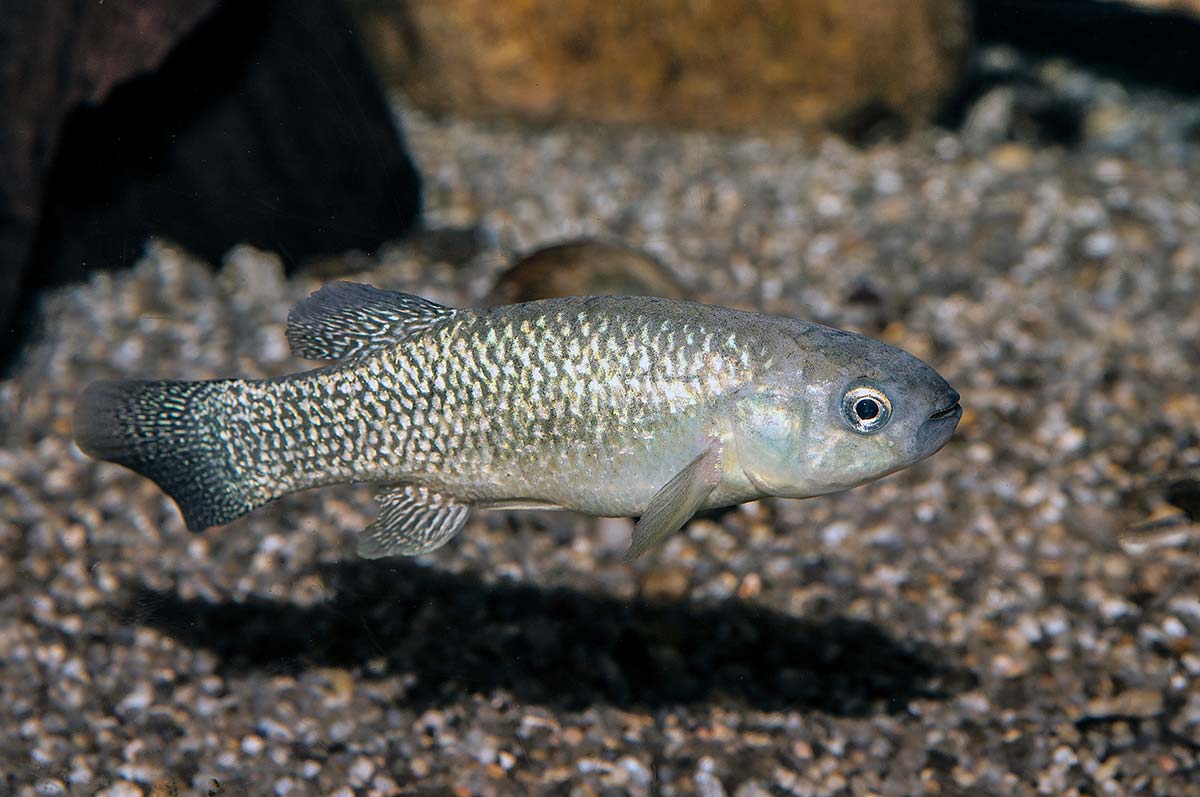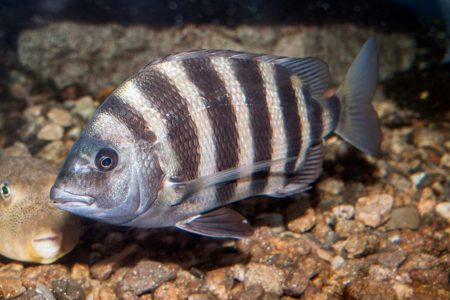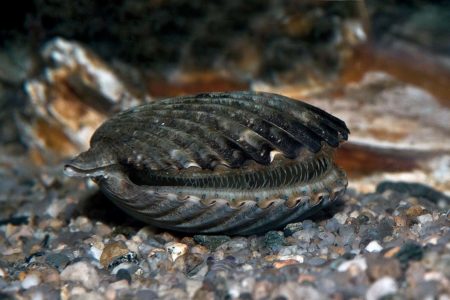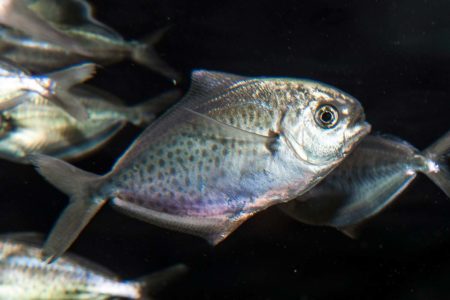
A closer look at our local “mud minnow.”
The mummichog is a medium sized member of the killifish family of marine fishes. This species is found along the Atlantic Coast from the Gulf of Saint Lawrence south to the gulf coast of Texas in the Gulf of Mexico. Mummichog are found in saltwater marshes, estuaries, and sheltered shores where tidal waters move over eelgrass beds. The key habitat type that they prefer is where there is an abundance of submerged aquatic vegetation.
The mummichog has shown to be one of the hardiest and highly adaptable fish that we know of. For example, most Atlantic fish species cannot survive for any period of time in waters as warm as 93.2 degrees, yet mummichog can survive in this temperature for up to 63 minutes before dying from heat shock. It can also handle temperature fluctuations from 42.8 to 95 degrees.
The mummichog also has a great tolerance to changes in salinity. Some mummichogs like those in the Chesapeake Bay area like to live in freshwater and rarely, if ever, find themselves in saltwater. Other mummichogs that live along the coast are found in bays filled with mostly seawater.
Mummichogs can be distinguished by a single soft dorsal fin and their pelvic fins are located close to the rear fin. As adults, mummichogs are typically around 3 to 4 inches in length, with females growing larger than the males. They have somewhat flattened heads and the mouth is turned upward, clearly to feed at the surface of the water. They’re a dimorphic species, meaning males and females have different physical characteristics. The males are darker in color than the females and usually have orange and blue markings during the breeding season. Males have a dark olive green coloration on the dorsal side and lighter yellow on the ventral side. They also display vertical stripes along their sides. Females usually have a silvery-yellow on the ventral side and that color gradually fades to a more distinct yellow on the dorsal side. They also lack the stripes that male mummichog will display.
The breeding patterns of mummichogs have been intensely studied. This species has the ability to spawn up to eight times in one season. During spawning season, males become more and more aggressive and they begin to display bright colors on their rear fins and bright spots along the sides of their bodies. The spawning season begins in the spring and lasts until fall. Spawning typically takes place when the tides are highest during the new or full moon. This is because the eggs develop out of the water, a rarity for any marine fish. They are laid on almost any surface around the spawning site. Frequently observed places mummichog eggs have been observed upon include empty mussel shells, on aquatic plants, in pits dug and covered by the female, and even directly on the bottom.
Mummichog eggs are laid in shallow areas during high tide so when the tide goes out, they will be exposed to the air in which they develop. After the following month’s high tide cycle, they are submerged in water again and begin to hatch. This process may take approximately 24 days to complete. Females can release up to 460 eggs at one time and when the eggs are released, they stick themselves to whatever object they first come in contact with.
When hatched, mummichog larva are approximately 7 millimeters in length. They stay in the intertidal zone for six to eight weeks after hatching. Here they live on the outskirts of the marsh during high tides and in shallow pools during low tides. Once the larva are roughly 12 millimeters in length they begin to move and swim with the adults in schools. When tides are low, these juveniles no longer stay in the shallow pools but move to subtidal marsh creeks and deeper intertidal pools. Full physical maturity is reached in about 2 years after hatching.
The mummichog is also known as a mud minnow which originates from its method of avoiding freezing during the winter months, burrowing their way into the sediment and mud at the bottom where they are living. Mummichogs have been found to burrow down up to almost 8 inches into the mud. Despite this extraordinary ability, not all mummichogs go for this survival technique during the winter months. Some move to deeper waters, often at the mouths of channels where the constantly moving water will not freeze.
A burrowed mummichog will remain buried in the mud until a suitable temperature of approximately 59 degrees is reached in the spring. At this point, the fish will push their way back to the surface and breeding season will begin. During the warm months, mummichogs remain a comparatively stationary fish, and most will not leave a range of about 124 feet along the shoreline in tidal creeks.
The word “mummichog” is Native American for “going in crowds,” which is exactly what this species will do. They travel in huge schools, often times with their numbers exceeding several hundred fish.



